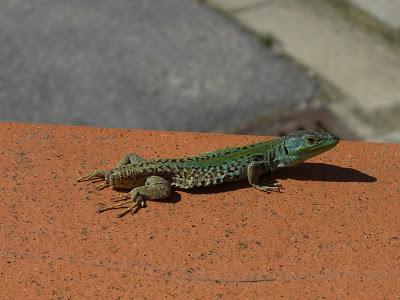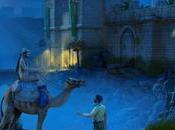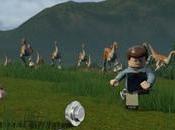 From the broken tree branch that properly buried roots and therefore can generate a new plant, the tree that we have broken the branch which soon reappears stronger than before, the starfish that regenerates damaged his arms, until the frightened lizard defending itself losing its tail, but in a short time it grows another daughters. They are all processes of spontaneous regeneration.But man, if he lost a leg or an arm, with the degree of evolution that we have, we are not yet able to regenerate a part of our body. The proliferation of our differentiated cells is not so specific as to reconstruct a limb, an eye, a finger, a hand. We are extremely vulnerable and we have no natural mechanisms that are in place from the time when there is a mutilation.Biotechnology in this area have in front of the El Dorado. It would be revolutionary discovery of a mechanism, after genetic modification or any other manipulation, able to put in place a spontaneous regeneration in humans. We will be almost invincible. I am convinced that sooner or later, in a few years, the news will come, "mouse with docked tail was able to make it grow." Appropriate genetic analysis and subsequent DNA evidence of plants and animals are already able to regenerate parts of their body, they may prove to be of utility in the field of biotechnology shocking.In New Zealand, a group of researchers is doing exactly this, he studied the DNA of lizards to figure out how to regenerate nerves in humans. The study focuses in research that part of the genome of the lizard that makes it appropriate to maintain the information, after maturation reached the organism, to be able to regenerate cell proliferation through a body part. They are looking for an area of the lizard's body, which is filled with stem cells with a high degree of specialization and with strong power stem. That would be great.
From the broken tree branch that properly buried roots and therefore can generate a new plant, the tree that we have broken the branch which soon reappears stronger than before, the starfish that regenerates damaged his arms, until the frightened lizard defending itself losing its tail, but in a short time it grows another daughters. They are all processes of spontaneous regeneration.But man, if he lost a leg or an arm, with the degree of evolution that we have, we are not yet able to regenerate a part of our body. The proliferation of our differentiated cells is not so specific as to reconstruct a limb, an eye, a finger, a hand. We are extremely vulnerable and we have no natural mechanisms that are in place from the time when there is a mutilation.Biotechnology in this area have in front of the El Dorado. It would be revolutionary discovery of a mechanism, after genetic modification or any other manipulation, able to put in place a spontaneous regeneration in humans. We will be almost invincible. I am convinced that sooner or later, in a few years, the news will come, "mouse with docked tail was able to make it grow." Appropriate genetic analysis and subsequent DNA evidence of plants and animals are already able to regenerate parts of their body, they may prove to be of utility in the field of biotechnology shocking.In New Zealand, a group of researchers is doing exactly this, he studied the DNA of lizards to figure out how to regenerate nerves in humans. The study focuses in research that part of the genome of the lizard that makes it appropriate to maintain the information, after maturation reached the organism, to be able to regenerate cell proliferation through a body part. They are looking for an area of the lizard's body, which is filled with stem cells with a high degree of specialization and with strong power stem. That would be great.Magazine Tecnologia
The spontaneous regeneration human, sooner or later it will be possible.
Creato il 09 giugno 2013 da Chico91 From the broken tree branch that properly buried roots and therefore can generate a new plant, the tree that we have broken the branch which soon reappears stronger than before, the starfish that regenerates damaged his arms, until the frightened lizard defending itself losing its tail, but in a short time it grows another daughters. They are all processes of spontaneous regeneration.But man, if he lost a leg or an arm, with the degree of evolution that we have, we are not yet able to regenerate a part of our body. The proliferation of our differentiated cells is not so specific as to reconstruct a limb, an eye, a finger, a hand. We are extremely vulnerable and we have no natural mechanisms that are in place from the time when there is a mutilation.Biotechnology in this area have in front of the El Dorado. It would be revolutionary discovery of a mechanism, after genetic modification or any other manipulation, able to put in place a spontaneous regeneration in humans. We will be almost invincible. I am convinced that sooner or later, in a few years, the news will come, "mouse with docked tail was able to make it grow." Appropriate genetic analysis and subsequent DNA evidence of plants and animals are already able to regenerate parts of their body, they may prove to be of utility in the field of biotechnology shocking.In New Zealand, a group of researchers is doing exactly this, he studied the DNA of lizards to figure out how to regenerate nerves in humans. The study focuses in research that part of the genome of the lizard that makes it appropriate to maintain the information, after maturation reached the organism, to be able to regenerate cell proliferation through a body part. They are looking for an area of the lizard's body, which is filled with stem cells with a high degree of specialization and with strong power stem. That would be great.
From the broken tree branch that properly buried roots and therefore can generate a new plant, the tree that we have broken the branch which soon reappears stronger than before, the starfish that regenerates damaged his arms, until the frightened lizard defending itself losing its tail, but in a short time it grows another daughters. They are all processes of spontaneous regeneration.But man, if he lost a leg or an arm, with the degree of evolution that we have, we are not yet able to regenerate a part of our body. The proliferation of our differentiated cells is not so specific as to reconstruct a limb, an eye, a finger, a hand. We are extremely vulnerable and we have no natural mechanisms that are in place from the time when there is a mutilation.Biotechnology in this area have in front of the El Dorado. It would be revolutionary discovery of a mechanism, after genetic modification or any other manipulation, able to put in place a spontaneous regeneration in humans. We will be almost invincible. I am convinced that sooner or later, in a few years, the news will come, "mouse with docked tail was able to make it grow." Appropriate genetic analysis and subsequent DNA evidence of plants and animals are already able to regenerate parts of their body, they may prove to be of utility in the field of biotechnology shocking.In New Zealand, a group of researchers is doing exactly this, he studied the DNA of lizards to figure out how to regenerate nerves in humans. The study focuses in research that part of the genome of the lizard that makes it appropriate to maintain the information, after maturation reached the organism, to be able to regenerate cell proliferation through a body part. They are looking for an area of the lizard's body, which is filled with stem cells with a high degree of specialization and with strong power stem. That would be great.Possono interessarti anche questi articoli :
-
Animation Arts annuncia Lost Horizion 2, debutterà ad inizio ottobre; prime...
Lost Horizon 2, l’attesissimo sequel dell’avventura grafica acclamata dal pubblico, arriverà il prossimo 2 ottobre in Europa. Lo conferma Animation Arts,... Leggere il seguito
Da Edoedo77
TECNOLOGIA, VIDEOGIOCHI -
Lost Horizon 2 – Annunciato il sequel della famosa avventura grafica
di Giorgio "Trex" TirettiLost Horizon 2 è stato annunciato ufficialmente da Deep Silver e Animation Arts che sarà disponibile durante il mese di agosto. Leggere il seguito
Da Videogiochi
GADGET, TECNOLOGIA, VIDEOGIOCHI -
Alzheimer: la malattia del lungo addio
“Non so più chi sono e cosa perderò ancora”, è così che si descrive Alice Howland, protagonista del film “Stil Alice”, alla quale viene diagnosticata una rara... Leggere il seguito
Da Mariagraziapsi
CURIOSITÀ, PSICOLOGIA, TECNOLOGIA, DA CLASSIFICARE -
Come effettuare il Jailbreak di iOS 8.3 con Taig 2.0
In questo tutorial voglio mostrarvi come effettuare il Jailbreak del vostro iPhone o iPad avente iOS 8.3 utilizzando Taig 2.0. Leggere il seguito
Da Beiphone
TECNOLOGIA -
Benvenuti a Jurassic World - Recensione - PS4
Lego e dinosauri: una passione che non ha età! Avviato il gioco, sarete avvolti dagli archi delle note di John Williams che vi traghetteranno fino alle isole... Leggere il seguito
Da Intrattenimento
TECNOLOGIA, VIDEOGIOCHI -
La mia sull’E3 2015, quant’è difficile raccontare un evento da solo tra le...
Anche questa volta è andata. L’E3 2015 di Los Angeles è passato via portando un ciclone di novità, annunci più o meno importanti e tanta stanchezza. Leggere il seguito
Da Edoedo77
TECNOLOGIA, VIDEOGIOCHI




